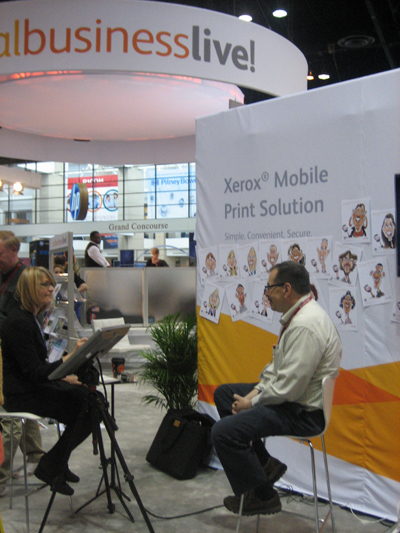Written by Howard Fenton
Senior Technology Consultant, NAPL
If you listen to the experts in the industry, many of them are talking about mobile communication strategies as the most important growth opportunity. The reason is the growth of smart phones which are becoming a necessity in business today. There are different approaches to offering mobile services, some are direct such as SMS texting services, and some are indirect and tie a printed piece to mobile solution. The first print technology to bridge the gap was QR codes. But some are starting to say that NFC or “near field communication” might have greater potential than QR codes.
QR codes are two dimensional codes that can be printed on posters or direct mail pieces, and when photographed with a smart phone, launch a specific action such as transferring to a mobile landing page, inserting information into the smart phone’s contact list, or mapping out a route to the nearest retail store.
NFC can also launch actions but it’s done in a different way. They use short range wireless technology to transfer information between the chip and the device. Unlike the QR code however, all that’s required is a touch between the smart phone and the NFC transmitter. That means that instead of scanning a QR code that is printed, NFC communication requires NFC chips. It can be used to make a payment like a credit card or transfer information or pictures from one cell phone to another.
 Security Issues of NFC
Security Issues of NFC
Like any technology, the acceptance is tied to the availability of equipment. One of the reasons why QR codes became popular before NFC is because Apple, the maker of the iPhone, has not embraced NFC. The reason according to many stories is that Apple is concerned about security issues, such as skimming. But the rumor, based on patent filings, is that Apple is interested in embracing NFC with the newer, more advanced security system.
Some are saying that Apple is working on an NFC solution that goes beyond a simple transfer of limited information to a strategy that includes biometric security in which your iPhone would become a new way to prove your identity and offer electronic commerce options, a strategy called a digital wallet . There are some reports of developmental delays at Apple but the concept of the digital wallet is already in beta testing.
But even if Apple supports NFC and creates a digital wallet application, that does not mean that QR codes will go away. Both can coexist and each may have its own unique advantage. QR codes are fast and free while NFC is not. The bigger question, however, is how are you bridging the gap between print and mobile marketing?
Interested in similar topics? You may want to check out:
- Are Online Ads Less Effective Than TV and Print Ads?
- QR Codes: More Than Just Shortcuts
- Enduring #PowerofPrint: How Print Stays Relevant in a Digital World
- Why the Copyright Alert System May Not Deter Illegal Downloads
- What does the Xerox Color 550/560, Security Printing, and National Pi Day have in common?
_____
Howie Fenton is a consultant and business advisor at NAPL as well as a paid contributor to this blog. Howie advises commercial printers and in-plants on benchmarking performance against industry leaders, increasing productivity, and adding digital and value services through customer research. For more information click here.


